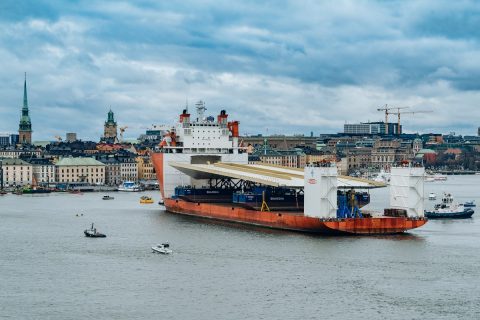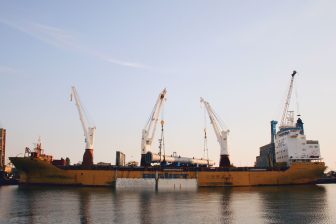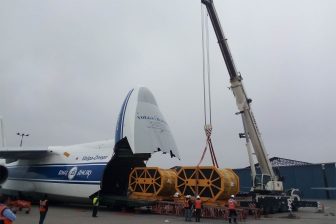
GAC and Cosco deliver 3,700-tonne bridge in Stockholm
PRESS RELEASE – GAC in Sweden has managed the delivery of a 3,700-tonne bridge in Stockholm, which will be used to connect Stockholm’s Gamla Stan island with Södermalm. The bridge arrived on semisubmersible heavy-lift vessel MV Zhen Hua 33 of Cosco Shipping, the largest vessel to ever arrive in the Swedish capital.
The 143-metre long bridge is a major feature in the City of Stockholm’s redevelopment of Slussen, the capital’s second-largest transportation hub.
In December last year, Cosco Shipping appointed GAC Sweden to act as their local sub-agent to manage the delivery of the USD 19.5 million steel bridge, which needed to be moved from China Railway Shanhaiguan Bridge Group’s plant in Guangzhou to Stockholm.
GAC was facing “a seemingly impossible task.” The 227-metre long vessel Zhen Hua 33 was the largest vessel to ever visit Stockholm and with a width of 45 meters, its cargo exceeded the Stockholm Archipelago’s width restriction of 32.28 metres by more than 20 metres.
Simulation
“We began by researching the ship’s specifications like engine power, rudder type, wind trap, bow and stern thrusters, and so on”, says Björn Fischer, Deputy Managing Director at GAC Sweden. “This we then shared with the Swedish Maritime Administration to enable them to create a model to find a way to handle the passage with the help of simulator technology. The results of that exercise were not ready when the Zhen Hua 33 left China on 2 January, as the first available simulation slot was less than three weeks before the ship’s estimated arrival in Stockholm on 17 February.”
With the SMA simulation outcome pending, GAC Sweden met with construction company Skanska Sverige, Cosco Shipping and tugboat company Marin & Haverikonsult to plan the unloading operation.
Bad weather
Less than two weeks before the ship’s arrival, GAC received the SMA permit which included some stringent conditions. The vessel was only allowed to transit the busy waterway during daylight, wind speed was not allowed to be higher than 10-12 m/s, there needed to be at least 1 nautical mile visibility and two pilots were required.
With all the permits in hand, a new challenge hit. Bad weather with waves over 9 metres high in the Bay of Biscay forced the ship to anchor off the southern coast of Spain and delayed the vessel’s arrival by almost a month. But when the ship finally arrived, conditions for the passage were perfect. “Thanks to the meticulous planning and close cooperation between GAC Sweden, Cosco, the Swedish Maritime Administration and Skanska Sverige, the passage through the archipelago and the unloading operation went completely according to plan”, says Erik Eriksen, director and partner at Cosco Shipping Lines in Sweden.



